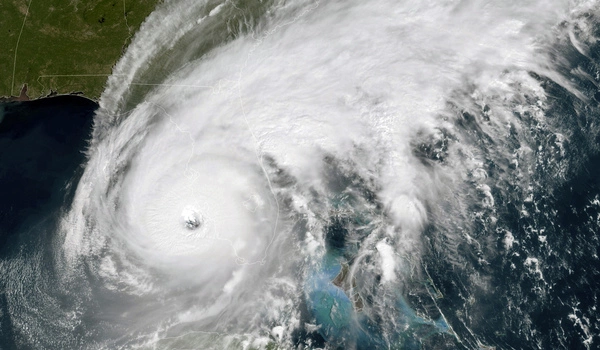Another example of air-sea interaction is tropical cyclones. In the North Atlantic and eastern North Pacific, these storm systems are known as hurricanes, and in the western North Pacific, they are known as typhoons. The winds of such systems revolve counterclockwise in the Northern Hemisphere and clockwise in the Southern Hemisphere around a center of low pressure.
Extreme heat often follows tropical cyclones, complicating disaster recovery even further, according to researchers. The National Weather Service issued an extreme heat advisory three days after Hurricane Fiona hit Puerto Rico in mid-September, warning that the heat index, which incorporates humidity to calculate perceived temperature, could reach 109 degrees.
According to a new University of Arizona-led study published in the Journal of Geophysical Research, above-average temperatures almost always follow tropical cyclones – which by definition include tropical storms and hurricanes and can soar to nearly 10 degrees Fahrenheit above average. The study’s authors stressed that their findings are most likely conservative estimates of how high temperatures can rise after a cyclone.
Tropical cyclones frequently cause damage due to strong winds, storm surges, heavy rain, and flooding, but the researchers discovered that extreme heat is an additional hazard. Temperatures above average can occur days later and even in nearby areas that were not directly affected by the storm.
The climate change impacts of this are very simple to understand. Hurricanes will likely drop more intense rain in the future, putting more people in danger. Then, if you add a hotter environment on top of that, you can expect a greater overall impact.
Zackry Guido
“Multiple extreme events happening within a very short window of time can complicate disaster recovery,” said lead study author Zackry Guido, an assistant research professor in the university’s School of Natural Resources and Environment and the Arizona Institutes for Resilience: Solutions for Environment and Societies, or AIRES. “To medical providers, heat is a concern. Our results suggest that tropical cyclone preparedness should also include public information about heat risk.”
The research team analyzed 53 tropical cyclones in the eastern Caribbean between 1991 and 2020 and 205 interactions between the cyclones and 14 Caribbean cities. They found that the cities’ heat index values were always warmer than average after the storm.
“Everyone’s focus is on the destructive power of tropical storms and hurricanes — the storm surge, winds, flooding — which is obviously quite significant, but our focus is on the combined hazard of storm and subsequent heat,” Guido explained. “Hurricanes are massive heat pumps, redistributing heat over a large spatial distance around the storm’s center, and they leave massive destruction in their wake, capable of knocking out the energy grid. This combination is frequently hazardous because it slows recovery and endangers human health.”

While the paper doesn’t explore how climate change may be impacting the phenomenon, the authors expect that high heat index values following tropical cyclones will increase in the future.
“The climate change impacts of this are very simple to understand,” Guido said. “Hurricanes will likely drop more intense rain in the future, putting more people in danger. Then, if you add a hotter environment on top of that, you can expect a greater overall impact.”
Guido directs AIRES International Programs and collaborates closely with the university’s new Arizona Initiative for Resilience and Development, both of which support UArizona research in areas most vulnerable to social and environmental change, as well as research on topics that advance sustainable development.
The cyclone research is part of a larger effort to improve Puerto Rico’s climate resilience. The researchers held workshops in the Caribbean with public health researchers and metrological service professionals, who stressed the importance of better understanding the impact of heat after tropical storms and hurricanes.
“We want to highlight this as a new hazard,” Guido said. “We collaborated with the National Weather Service in Puerto Rico, and part of our work, which is not discussed in the paper, was to raise awareness about the effects of heat. From May 11 to 15, Puerto Rico will observe heat awareness week, and we are working to advance public education and establish a heat awareness day.”
















